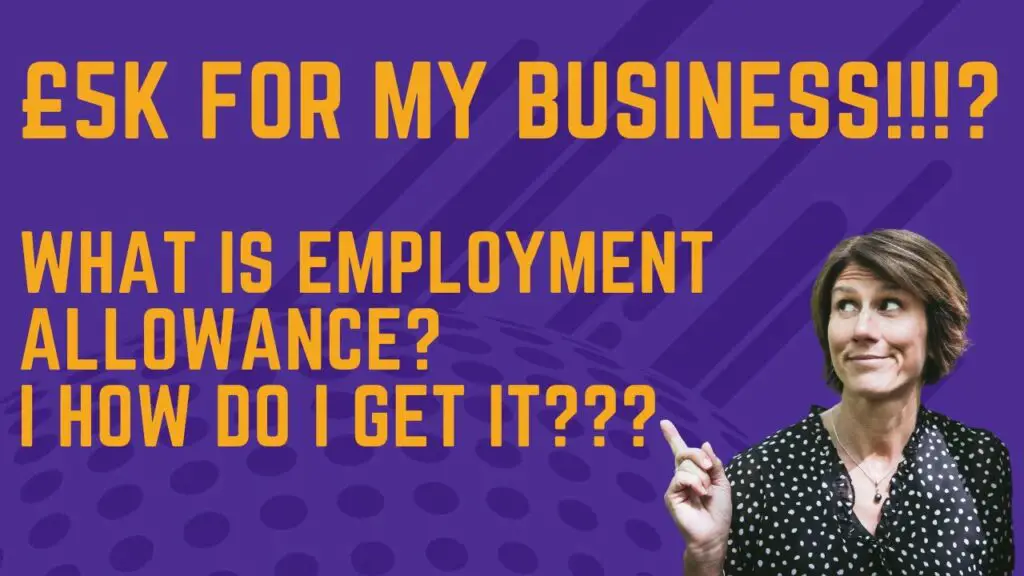
Hey there! I’m excited to share with you all about understanding Employment Allowance in the UK. It is a valuable tax relief scheme that helps businesses and charities save money on their employer National Insurance contributions. By claiming Employment Allowance, eligible employers can reduce the amount of National Insurance they have to pay each year, providing a welcomed boost to their bottom line. It’s a fantastic way to support businesses in the UK and encourage growth and employment.
What is Employment Allowance UK?
Employment Allowance is a scheme introduced by the UK government to help businesses and charities reduce the amount they pay in employer’s National Insurance contributions. The allowance is currently set at £5,000 per year, meaning that eligible employers can save up to this amount on their NI bill.
As an employer, it’s important to take advantage of it if you meet the criteria set out by HMRC. This can help you save money and reinvest it back into your business or organization.
Who is Eligible for Employment Allowance?
To be eligible for Employment Allowance, you must meet the following criteria:
- You must be a business or charity that pays employer’s Class 1 National Insurance
- You must have paid less than £100,000 in employer’s Class 1 National Insurance in the previous tax year
- You must not be a public body or business that provides services to public bodies
If you meet these criteria, you can claim and start saving money on your National Insurance contributions.
Who cannot claim Employment Allowance?
Employment Allowance (EA) in the UK reduces an employer’s National Insurance liability by up to a specified amount each tax year. However, certain businesses and individuals are ineligible to claim it. Here are the main categories of those who cannot claim:
Single Director Companies: Companies with only one employee who is also a director cannot claim.
Employers with Class 1 liabilities of £100,000 or more: If your employers’ Class 1 National Insurance liabilities were £100,000 or more in the previous tax year, you cannot claim.
Employers with employees covered by IR35 rules: If you’re a public sector employer and have deemed payments of employment income, you cannot claim Employment Allowance for those deemed payments.
Domestic Employers: Employers of personal, household, or domestic workers, such as nannies or gardeners, unless they are employed as part of a business, are not eligible.
Service Companies: If more than half of your earnings are derived from the work of one employee who has paid work under the IR35 rules, you cannot claim.
Employers of connected companies or charities: If a group of companies is connected for Employment Allowance purposes, only one company or charity within the group can claim. Additionally, certain connected companies and charities with significant financial connections or overlaps cannot claim.
Public Authorities: Most public bodies cannot claim, including local, district, town and parish councils.
Employers of those on specific contracts: If you’re an employer who is part of a managed service company, or you employ someone for services covered by a personal service company (PSC), the allowance may not apply.
It’s important for employers to check their eligibility each tax year and ensure they meet all conditions before making a claim. If in doubt, consulting with an accountant or checking HMRC’s guidelines directly is advisable.
How to Claim Employment Allowance
To claim Employment Allowance, follow these steps:
Step 1: Check Eligibility
Ensure that your business or organization is eligible to claim. Refer to the categories of those who cannot claim, as detailed earlier.
Step 2: Use Payroll Software
Most payroll software packages will have a facility to claim Employment Allowance. Ensure your payroll software is up-to-date and supports EA claims.
Step 3: Claim via HMRC’s Basic PAYE Tools
If you do not use commercial payroll software, you can use HMRC’s Basic PAYE Tools to claim. Download and install the Basic PAYE Tools if you haven’t already.
Step 4: Indicate Your Claim
When running payroll, you will need to indicate that you are claiming the Employment Allowance:
In Payroll Software: Go to the relevant section in your payroll software where you process employer payments and look for an option to claim Employment Allowance.
In Basic PAYE Tools: Open the software, navigate to the employer section, and select the option to claim Employment Allowance.
Step 5: Submit an Employer Payment Summary (EPS)
Submit an Employer Payment Summary (EPS) to inform HMRC that you are claiming Employment Allowance. The EPS should be submitted each tax year to confirm your claim.
Step 6: Adjust Your Payments
Once your claim is processed, adjust your payments to HMRC accordingly. Your National Insurance liability will be reduced by the amount of the Employment Allowance.
Step 7: Monitor Your Allowance
Keep track of the amount of Employment Allowance used throughout the tax year to ensure you do not exceed the annual limit. Most payroll software will do this automatically.
Step 8: Renew Each Tax Year
You must claim Employment Allowance each tax year. Ensure you indicate your claim when you start the new tax year in your payroll software or Basic PAYE Tools.
Additional Notes:
Review Notices: HMRC may send notices regarding your claim. Ensure you review and comply with any additional requirements or notices.
Record Keeping: Keep detailed records of your claim and how the Allowance has been applied to your National Insurance payments.
If you encounter any difficulties or uncertainties during the process, consider consulting with an accountant or payroll specialist for assistance.
Benefits of Employment Allowance
There are several benefits to claiming Employment Allowance as an employer. Some of the key advantages include:
- Saving money on your National Insurance contributions
- Reinvesting the savings back into your business
- Improving cash flow and profitability
- Encouraging job creation and growth within your organization
By taking advantage of the Allowance, you can improve your financial situation and create a more sustainable and successful business.
Examples of Employment Allowance Savings
To help you understand the potential savings you could make with Employment Allowance, here are a few examples:
- Small Business A has an annual NI bill of £3,000. By claiming Employment Allowance, they can save the full £3,000 and reinvest it in their business.
- Charity B pays £7,000 in employer’s NI contributions each year. With a £5,000 allowance, they can reduce their bill to just £2,000 and allocate the savings to their charitable activities.
- Start-up C is a new business with limited cash flow. By claiming Employment Allowance, they can save money on their NI contributions and use it to grow their business and hire more employees.
These examples illustrate the tangible benefits of Employment Allowance and how it can make a real difference to businesses and organizations of all sizes.
Frequently Asked Questions
As an employer looking to claim Employment Allowance, you may have some questions about how the scheme works. Here are a few common FAQs to help you better understand the process:
Can I claim if I am a sole trader?
Unfortunately, sole traders are not eligible, as it is only available to businesses and charities that pay employer’s Class 1 National Insurance.
How often can I claim Employment Allowance?
You can claim Employment Allowance once per tax year, and the allowance resets each year. Make sure to claim it at the beginning of the tax year to start saving on your NI contributions.
Conclusion
In conclusion, Employment Allowance is a valuable tax relief scheme that can benefit businesses and charities in the UK. By claiming the allowance, you can save money on your National Insurance contributions, improve your cash flow, and reinvest the savings back into your organization.
I hope this article has helped you better understand Employment Allowance and how you can take advantage of it as an employer. Remember to check your eligibility, claim the allowance, and monitor your savings to make the most of this valuable tax relief.

